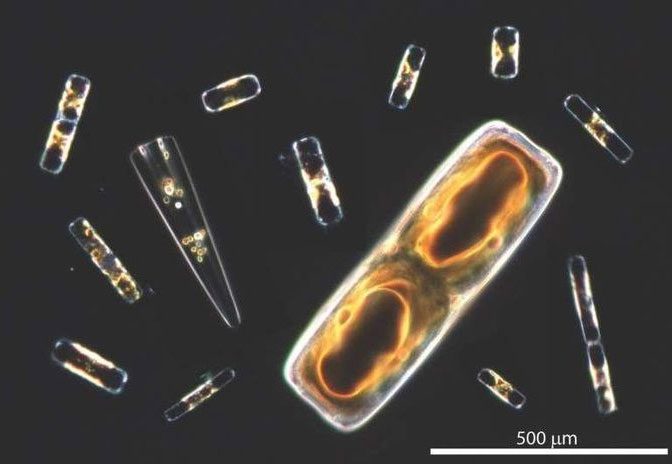According to research, the oxygen in one-tenth of our breaths is produced through a cellular mechanism that enhances the photosynthesis process in marine phytoplankton.
Described as a “breakthrough” by a team of researchers at the Scripps Institution of Oceanography, University of California, San Diego (USA), this previously unknown process accounts for 7% to 25% of the total oxygen produced and carbon fixed in the ocean.

Marine phytoplankton is estimated to produce about 50% of the Earth’s oxygen.
When examining photosynthesis processes on land, researchers estimate that this mechanism could account for up to 12% of the total oxygen produced across the planet.
Scientists have long recognized the importance of phytoplankton due to their photosynthetic abilities. These tiny algae form the foundation of aquatic food webs and are estimated to produce about 50% of the Earth’s oxygen.
A new study published in the journal Current Biology has identified how a V-type H+-ATPase (VHA) enzyme supports global oxygen production and carbon fixation from phytoplankton.
“Over millions of years of evolution, these ocean cells perform small chemical reactions, particularly to create mechanisms that enhance photosynthesis. This, in turn, helps shape the trajectory of life on this planet,” said lead author Daniel Yee, a postdoctoral researcher at the European Molecular Biology Laboratory and the University of Grenoble Alpes (France).
The research team shed light on the complex activities of diatoms. Previous studies have aimed to determine how VHA is utilized by various organisms in processes crucial for life in the ocean.
This enzyme is found in nearly all forms of life, from humans to single-celled algae. Its fundamental role is to regulate the pH of the surrounding environment.
The researchers combined high-tech microscopy techniques with genetic tools. They discovered that the chloroplasts of diatoms are surrounded by an additional membrane compared to other types of algae. This membrane encases the space where carbon dioxide and light energy are converted into organic compounds and released as oxygen.
The team found proteins within a cell that possesses multiple membranes. Coupled with detailed experiments to quantify the photosynthetic process, they found that these proteins actually enhance photosynthesis by providing more carbon dioxide. Diatoms originated from a symbiotic event between a protist and algae approximately 250 million years ago.
The authors emphasize that the process of one cell consuming another, known as phagocytosis, is common in nature. However, something special occurred in the case of diatoms.
Not all types of algae possess this mechanism. The authors note that when diatoms formed 250 million years ago, atmospheric oxygen levels increased significantly. The newly discovered mechanism in algae may play a role in that process.


















































